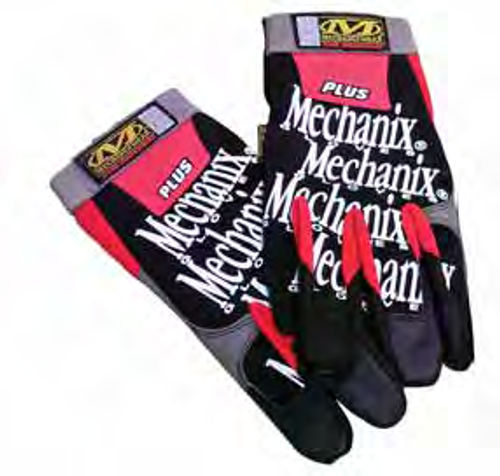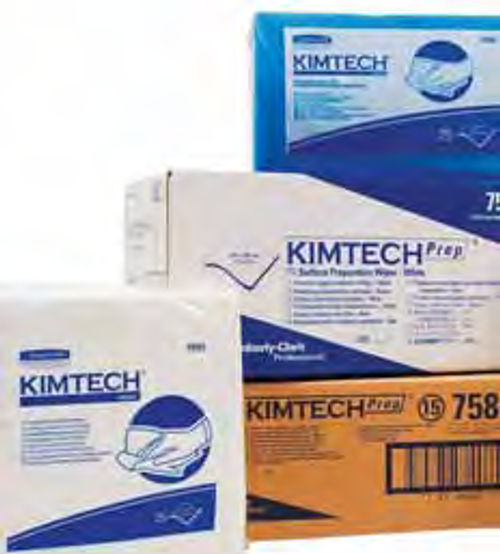Insight & Reviews From Larry
Readers Ask This Restoration Pro About Painting & Polishing, and He Tests a Pad Washer, Gloves & Shop Towels.
Tell Me More About That Spot Repair
In the June issue you talked about making a spot repair by extending the paint out a little farther with each coat. I’m familiar with this method, but I have never seen it done without leaving overspray on the edges. Will applying the clear coat cover that overspray?
Bill Hartman, Jr. Cumberland, Maryland
No, overspray will always show underneath a clear coat. Let me explain the process to prevent that problem.
To start, the paint I used is base coat, not single-stage, enamel, or lacquer. I make the first pass; allow that coat to dry and tack it clean. That removes the overspray. The second coat extends beyond the first coat and it, too, is allowed to dry then is tacked clean to remove the overspray. The third coat is thinned an extra 10 percent and sprayed beyond the second coat. Because it is thinned more than the first two coats, it produces less overspray. That coat is allowed to dry and is tacked clean to remove any overspray.
Perhaps the real trick here is making certain that each coat feels smooth when tacked clean. Any roughness must be removed even if the surface must be lightly sanded with 1500 grit. The last coat cannot be sanded so even more care is taken there to ensure that the surface is perfectly smooth. This sounds a little complicated, but the high-quality base coats we spray today don’t produce much overspray and you can almost stop spraying mid-panel and not be able to tell where you stopped.
If There’s Water In Your Air Lines…
I have a five-hp, 80-gallon compressor and too much water in the air lines. The guys at the automotive store tell me that the amount of air coming out of the compressor is too fast and doesn’t give the water time to settle in the tank.
Is there anything I can do to prevent this problem?
Terry Hinshaw Snow Camp, North Carolina
You didn’t mention whether your compressed air system has a filtering system attached. Without a filtering system you can regulate the air flow back to 40 PSI, most five hp compressors top out at 120 PSI, and you are still going to get water in the air lines.
To stop the water you will need to add a filtering system to your air line. In the air line article (April), I used an Eastwood #20472 Modular Coalescing Regulator System, or you can go with a desiccant system like the Eastwood #51508; either will do the job.
This Paint Leaves Orange Peel
I purchased your books “Revive Your Ride” and “Project Charger” and found both to be tremendous resources.
My question concerns spraying PPG DCC Concept. I am using a SATA Mini Jet 3 and have tried both the 1.0 and the .8 mm. spray nozzles but I am still getting a lot of orange peel. This doesn’t seem to happen when I spray primers. Is orange peel inherent to the DCC line of paints?
Joe Leonardo Via e-mail
To clarify, DCC Concept is a single stage urethane finish, meaning this product doesn’t require a clear coat to be applied over it.
When urethane finishes first arrived on the market we were instructed to apply them with medium wet coats. That method produced a small amount of orange peel, but nothing we couldn’t live with. Over the years the urethane finishes have changed and improved. So have the methods used to apply them. This is a point I cover in my latest DVD, “Curing Paint Problems,” so I’ll give you the short, sweet version here.
Try speeding up the passes on your initial coat. You are not looking for a tack coat, like you would spray if applying enamel, but you are looking for an extremely thin coat. So much so that you will notice that the first coat failed to cover all of the surface.
On the second coat, apply it a little slower. This coat will begin to cover and you will notice it is laying very flat on the surface; very little, if any, orange peel will be visible.
Apply the third coat, and fourth coat, if desired, at the same speed and that should reduce or eliminate your orange peel problem.
If the color is a solid, with no metallic content, you can lightly sand the finish before compounding to remove any light orange peel.
Where Can I Find Those Products…?
Where can I purchase the 3M polishing products you used in the May article “Producing a Mirror Finish”?
Mike Ackerman Via e-mail
Your local automotive paint dealer will carry all of the 3M products. If you don’t have a local source, call 3M’s St. Paul, Minnesota, headquarters, visit solutions.3M.com
…And Do They Come in a Kit?
Does 3M sell the polishing products you featured in the May issue in kit form or do I need to purchase the products individually?
Art Grandle Via e-mail
You will need to purchase the products individually. The part #’s for the polishing products and buffing pads are as follows: 1500 sanding disk #2088; 3000-grit disk #2085; Interface pad #5777; Compound #6085; pad #5737; Machine Polish #6064; pad #5738; Ultrafine Polish #6068; pad #5733.
Can You Recommend a Spray Gun?
I am just about ready to paint my ’46 Hudson pickup and was wondering if you could recommend a good and reasonably priced HVLP spray gun? The DeVilbiss Tekna featured in the March issue sounds great, but the ($450) price is a little steep. I have been using a Binks #7 but would like to change to a more efficient gun.
Randy Via e-mail
Tossing the #7 is a good idea. This was a great gun back in its day, but compared to the guns used today it’s like trying to drive with one tire flat. I just put the Eastwood #51603 Concours HVLP spray gun to the test and I think for $200 it is a very nice gun. The Concours comes with 1.2- and 1.4-mm spray tips, which makes the gun very versatile (eastwood.com).
The Universal Pad Washer
Here is one of those tools we always knew we needed but never knew how much we needed it. The Universal Pad Washer does one thing, it cleans all of those buffing and polishing pads we clog up with dried compounds and polishes and used to throw away because the laundry down the street kicked us out for messing up their machines.
The Universal Pad Washer, from Grit Guard, Inc., is designed and constructed to allow the user to quickly and safely insert either an electric or pneumatic-driven buffer into the unit, turn the buffer on, and quickly clean the pad.
It cleans both wool and foam pads in sizes from 2 to 10 inches. Just fill the cleaning container with clean water per the instructions, apply a few drops of Pad Renewing Solution (included in the kit) to the pad being cleaned, insert the buffer and turn it on.
That’s all there is to it. The specially designed Grit Guard® cleaning insert does the rest.
This pad washer not only cleans pads, it will also improve the effectiveness of the pads by allowing you to remove the build-up as you work. That reduces your buffing time substantially by maintaining the cutting ability of the pad.
The Universal Pad Washer is available at many automotive parts outlets or go to padwasher.com and click on the “Where To Buy” button for alist of dealers. You also can contact Grit Guard, Inc. at for more information. The unit retails for about $40.
Mechanix Wear Gloves
If you watched me build Project ’46 you probably noticed that I wore gloves during the heavy construction phase of the project. You also may have noticed that I cut the fingertips out of those gloves. I just can’t stand gloves that won’t allow me to pick up small items.
Then Mechanix Wear sent me a couple of pair of their gloves, the Original Gloves, and the Original Plus Gloves, to put through the mill. Quite possibly, I’ll never have to cut the fingers out of a pair of gloves again.

Both the Original and the Original Plus gloves performed flawlessly. Both felt great, both breathed to keep my hands cool, and neither impaired my ability to pick up anything I happened to drop on the floor.
However, I did prefer the Original Plus gloves over the Original gloves for the simple reason that the Plus gloves have a much-improved traction pattern added to the thumb and first three fingers. Picking a dime off the floor was no problem for these gloves.
Whether you opt for the Original or the Original Plus Gloves, I will offer this one tidbit of advice. Purchase a pair that fits like a glove. That means difficult to pull on, difficult to pull off. You’ll appreciate the snug fit when lying on a creeper under a car and the only flat washer you have just fell to the floor.
Find Mechanix Wear Gloves at your local home improvement center, megamart or automotive parts store.
Mechanix Wear
28525 Witherspoon Pkwy.
Valencia, CA 91355
KimTech Automotive Paint Preparation Products
We’ve been using Kimberly-Clark’s Scott Shop Towels in the shop for years now simply because they work great. They’ve now added a new line of low lint cleaning and protecting cloths to their paint shop towel line. These are the new products:
•KimTech Surface Preparation Wipes. These low-lint, solvent-resistant, polyester-blend wiping cloths are ideal for degreasing and surface cleaning prior to spraying.
•KimTech No Residue Tack Cloths. These anti-static tack cloths have a single advantage over the tack cloths we’ve been using. You don’t have to worry about leaving behind that sticky, gooey, residue common to most tack cloths. •KimTech Low and Medium Tack Cloths. After applying a seal coat I want a medium sticky tack cloth because all I am doing is removing any traces of paint dust that might have settled on the surface. In the past I had to hang onto my used tack cloths to deal with that need. I don’t have to do that anymore.
•KimTech Disposable Microfiber Cloths. These extremely soft, low-lint wiping cloths leave no surface streaks or smears. They are perfect for final detailing and, because they are disposable, you can always start with a fresh, clean cloth.
•KimTech Surface Preparation Microfiber Cloths. Like the disposable versions, these cloths will not streak or smear. They are highly absorbent and can be washed up to 300 times.
You can find all of these cleaning and preparation cloths at your local automotive paint supplier.

Kimberly-Clark Corp.
Dept. INT
P.O. Box 2020
Newnah, WI 54957-2020
;
















